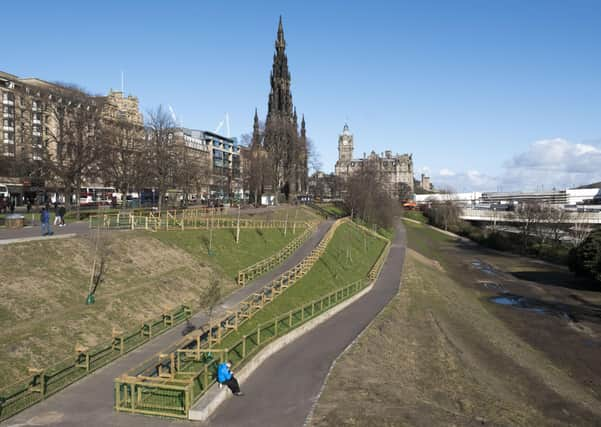Scotland’s arts industry can take heart from pent-up demand – Brian Ferguson


Like many others, I couldn’t help but take a few photographs of my own as a snapshot of a city bereft of not just tourists but also of shoppers, workers and families.
The most chilling thing was the number of boarded-up businesses – a stark reminder of the devastating impact of the coronavirus pandemic on the economy of the city centre and the livelihoods of those that depend on huge numbers of people flocking to Edinburgh for its heritage and cultural offering.
Advertisement
Hide AdAdvertisement
Hide AdBusiness leaders in the city are quite rightly already looking to the local population to help kick-start a revival of the tourism industry, by supporting its attractions, cafes, bars and restaurants. That scenario could play out across the country, even though restrictions on travel are likely to remain in place well into the summer, as folk make the most of what is on their doorstep.
The queues which have quickly formed outside recently reopened DIY stores, fish and chip shops, ice cream parlours and coffee shops across the country are also an early indicator that many, if not all, Scots are keen to reconnect with their old ways and lifestyles as soon as possible. The growing numbers of people who can be seen out walking, running and cycling is another indicator that many Scots are straining at the leash over more than a month of lockdown restrictions. That should certainly provide some much-needed optimism for those charged with running cultural venues and attractions who may be fearful that some of their audiences may not return for years.
It is, of course, still anyone’s guess when the first of the hundreds of closed-down sites will be able to unlock their gates and open up again. Like all businesses, arts and heritage organisations will already be grappling with how to enforce social distancing – a task which will be much easier at some sites than others. But I predict there will be pent-up demand to get back as soon as it is deemed safe to do so.
Extra queuing time and reduced capacities are likely to be the norm for the foreseeable future but they may feel like minor inconveniences compared to being asked to stay at home for weeks on end. Queuing for a supermarket became normal almost overnight, remember.
But there are at least two significant stumbling blocks which, if anything, seem to have grown in size since the first restrictions were introduced in mid-March. The first, as many cultural organisations and figures have conceded, is that their venues and attractions are likely to be pretty near the end of the queue, along with bars, nightclubs and major sporting events, when it comes to priorities from the government and public health authorities and local councils. The second is how many will be able to afford to reopen, even partially or at reduced capacity, given there is still so much uncertainly over what can happen and when, how many staff can be brought back on board, and an inability to sell tickets.
While the recent good weather has ushered in thoughts of summer, it has also begged the question of what we will all be able to do, and where, when it does officially arrive.
Getting any kind of answer looks as distant a prospect as ever.
Comments
Want to join the conversation? Please or to comment on this article.